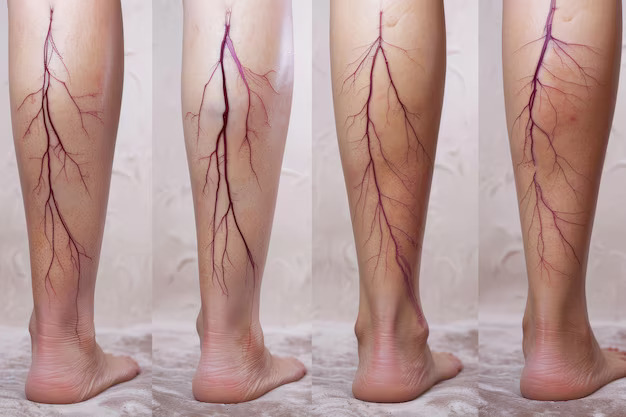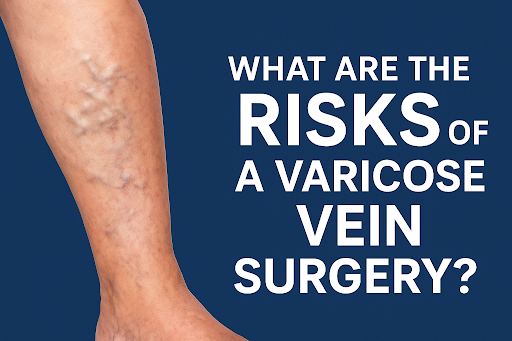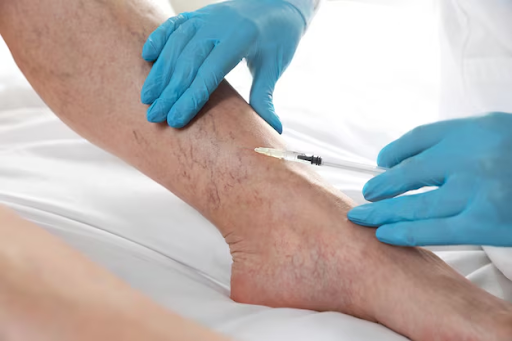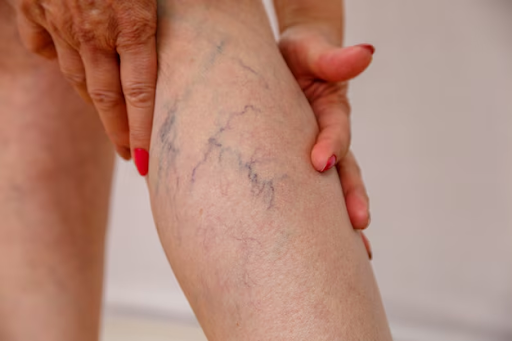Deep vein thrombosis (DVT) is an often overlooked condition, until it kills. A blood clot in one of your body’s deep veins, usually in your legs, might stop the blood flow and result in major problems, such as a pulmonary embolism. In this composition, we are explaining everything you need to know about DVT, its symptoms, pitfalls of blood clots, forestallment tips, and when to go to the emergency room. If you experience symptoms, it’s essential to consult a pain specialist or a vein specialist East Stroudsburg for prompt diagnosis and care.
What is DVT and Why It’s Dangerous
Deep vein thrombosis, or DVT, is a condition when a blood clot begins to form in one of the body’s deeper veins, usually the legs. It may not sound like much to begin with, but it has the potential to become life-threatening very quickly. When the clot migrates to the lungs, it can produce a pulmonary embolism that stops the blood from flowing and can kill the person if left untreated.
Deep vein thrombosis can sneak up on you. Some people don’t notice any symptoms, making it even more dangerous. But when signs do appear, they often include leg swelling, pain, and warmth in the affected area. Taking this condition seriously is essential, as well as understanding how to lower your risk. Visiting a vein specialist East Stroudsburg can help identify underlying vein problems and prevent complications.
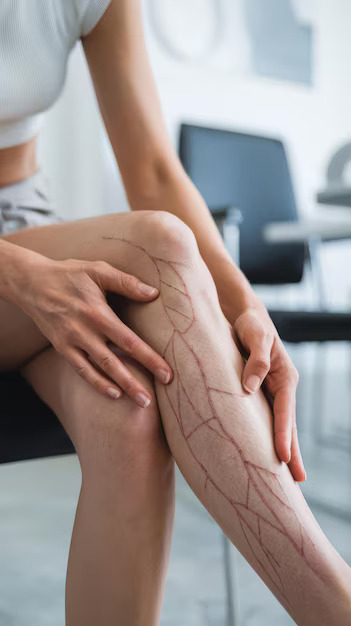
What Increases Your Risk for DVT?
There are several factors that can raise blood clot risks. One of the most prevalent is prolonged immobility. Sitting for hours on a long car ride, being stuck in a hospital bed following surgery, or even leading a very inactive lifestyle can be a factor.
Other risk factors are:
- Recent surgery, particularly to the legs, hips, or abdomen
- Injury to blood vessels
- Obesity
- Smoking
- Pregnancy
- Taking certain medications, such as birth control pills or hormone therapy
- Being over 60
- Having a family history of deep vein thrombosis
- Cancer or cancer treatments
- Conditions such as heart disease, inflammatory bowel disease, and even severe infections such as COVID-19
It’s also worth mentioning that individuals with some inherited blood-clotting disorders are at higher risk of developing DVT, even without other risk factors. Consulting a pain specialist or scheduling a screening at a vein specialist East Stroudsburg clinic can help determine your personal risk and start preventive care.
Identifying the Warning Signs
Early detection of DVT symptoms can make a big difference. The first visible sign is normally a swelling of one leg, particularly the calf. You may also experience persistent pain or cramping that worsens when walking or standing.
Other signs to be aware of:
- Warmth in the affected leg
- Red, purplish, or bluish coloration of the skin
- Tenderness near the clot
- Heaviness or aching in the leg
In very few instances, deep vein thrombosis is found in the arm. This leads to swelling, shoulder or neck pain, and a blue discoloration of the skin. If you notice any of these symptoms, a pain specialist or vein specialist East Stroudsburg should be your first call for evaluation.
If the clot travels to the lungs and produces a pulmonary embolism, the warning signals are much more ominous. They consist of abrupt shortness of breath, pain in the chest that increases with breathing, dizziness, headache, coughing up blood, or a fast pulse. These symptoms demand immediate medical attention.
Prevention Tips: How to Lower Your Risk
After surgery or bed rest, start moving as soon as you can. Don’t cross your legs when sitting; it can reduce blood flow.
Being active is the key to preventing DVT. Even the smallest steps count. If you’re flying or sitting for long periods, move around every hour or so. Stretch your legs, take a short walk, or lift your seated legs. Consider visiting a pain specialist for personalized advice on circulation and mobility exercises.
Other good tips are:
- Stay hydrated: Drinking plenty of water keeps your blood flowing freely.
- Wear compression stockings: These help promote blood flow in the legs and are especially helpful during long flights or if you’re at high risk.
- Raise your legs: You can avoid blood pooling by elevating your legs when you’re at rest.
- Keeping your weight in check eases the strain on your veins.
- Avoid smoking: Smoking significantly increases your risk of blood clots.
- Eat a balanced diet: A fiber-rich diet of fruits and vegetables supports healthy circulation.
For those dealing with chronic vein issues or visible vein problems, scheduling a varicose vein treatment Stroudsburg appointment is an excellent preventive step against DVT.
Physicians can prescribe blood thinners for patients recovering from surgery or who have had deep vein thrombosis in the past. Always follow your doctor’s prescription and do not skip medications.
Treatment Options for DVT
If deep vein thrombosis is diagnosed, it is typically treated with medication first. Blood thinners such as apixaban, rivaroxaban, or warfarin prevent existing clots from enlarging and prevent new ones from forming. In severe instances, clot-busting medications in the form of thrombolytics are utilized.
In some cases, if drugs do not work or are not appropriate, physicians may suggest placing a filter in the vena cava (a large abdominal vein) to trap clots before they travel to the lungs. Clot removal through surgery may also be an option if the DVT is severe.
Compression hose is frequently worn after recovery to decrease swelling and prevent future clots. Continuous blood flow is made possible by the moderate pressure that compression stockings apply to the legs. If you have visible vein problems, a varicose vein treatment Stroudsburg expert may recommend additional therapies to improve circulation.
Home Care Tips Following a DVT Diagnosis
When deep vein thrombosis is detected, it’s critical to receive at-home care. In addition to medication, making some minor lifestyle adjustments will also aid recovery and decrease the risk of complications.
Walk every day: Mild exercise enhances circulation.
Lift your legs when sitting: This eases pressure and allows blood to return toward the heart.
Maintain a routine schedule: Regular feeding, activity, and fluids all aid in healing.
Take note of your medications: Certain foods and supplements (especially those high in Vitamin K) can affect blood-thinning medications.
Consult your East Stroudsburg vein specialist or pain specialist before making dietary changes or taking supplements.
When to Get Emergency Help
It is essential to know when to get an immediate medical evaluation. Do not wait to see a physician if you feel deep vein thrombosis, particularly if you develop sudden swelling and pain in one leg.
If you encounter any of the following, contact emergency services immediately.
- Sudden shortness of breath
- Sharp chest pain getting worse when you take deep breaths
- A rapid or irregular heartbeat
- Lightheadedness or fainting
- Coughing up blood
These are warning signs of a pulmonary embolism, a severe DVT complication. Don’t wait; act quickly, as it could save your life.
Conclusion
Deep vein thrombosis is more prevalent than most individuals believe, and it can attack without warning. This is why awareness of the symptoms of DVT, knowledge of blood clot risks, and practice of DVT prevention measures are all crucial to maintaining your health.
Whether you’re recovering from surgery, working long hours at a desk, or on a long flight, staying aware and active can prevent this life-threatening condition. Pay attention to your body, don’t dismiss leg pain or swelling, and contact a healthcare provider if something feels wrong. By adopting a few lifestyle changes, consulting a pain specialist, and identifying the early warning signs, you can significantly reduce your risk of developing deep vein thrombosis.
For individuals dealing with chronic leg discomfort or visible vein issues, it’s advisable to consult a vein specialist East Stroudsburg or schedule a varicose vein treatment Stroudsburg consultation for professional guidance and tailored treatment options. To learn more about their vein care services, visit MVM Health’s website.


